New Opportunities for Teachers and Citizens in San Dimas
The new location is to provide services to people in San Dimas (over 34 thousand citizens).
Our center’s main values include the following:
- Respect for cultural, linguistic, and religious diversity;
- Service individualization;
- Recognition of clients’ unique needs;
- Promoting healthy development.
Our center provides early childhood education services to families living in different parts of the United States. We are planning to increase our organization’s presence in California by opening a new location to serve more than thirty thousand inhabitants of San Dimas. This presentation will delve into early childhood education models and apply this knowledge to the needs of people in San Dimas.

The Project Approach
- Teaching strategies based on “projects” – thorough investigations of topics of interest by individuals or small/large groups;
- Key theorists – Katz and Chard;
- The approach chimes with the constructivist philosophy (knowledge is built from within and is created by learners);
- Promotion of holistic development: projects facilitate “learning by doing,” thus stimulating physical and cognitive development, and children can improve their social skills and emotional development by engaging in peer collaboration (Helm & Katz, 2016, p. 2).
The Project Approach enables learners to act as investigators and delve into real-world topics to gain new experience and create practice-oriented knowledge. Concerning its theoretical foundations, the approach basically implements the ideas of constructivist teaching, according to which learning takes place when learners take an active part in knowledge generation instead of staying passive. It supports the development of the whole child by encouraging learners to form interests, teaching children to think and act in the real world, and promoting skills required for effective collaboration.
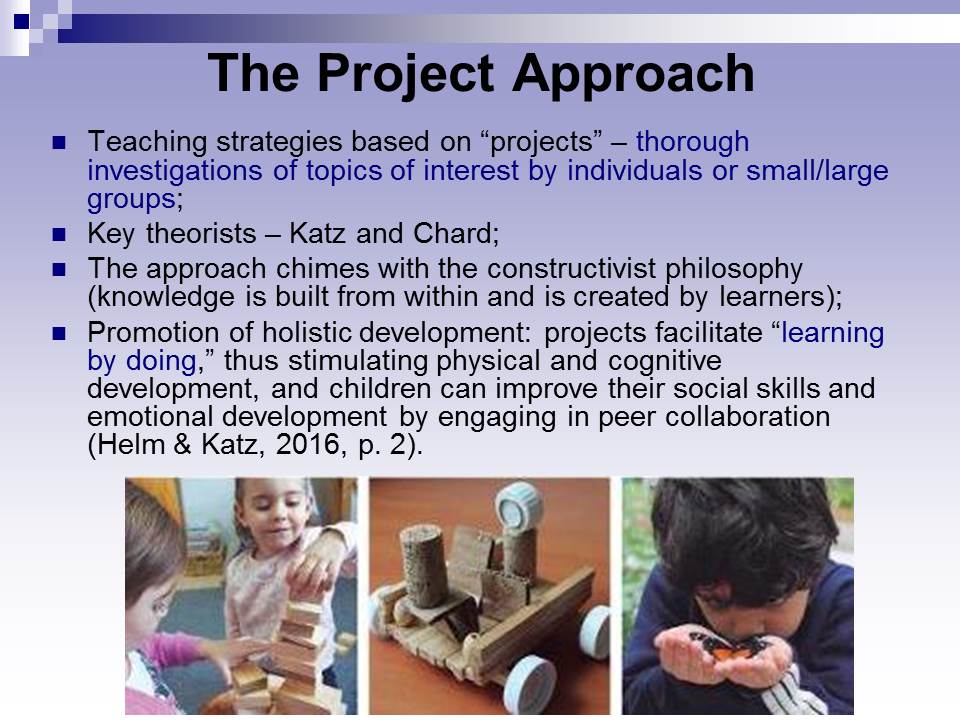
Head Start
- HS emerged as a model to improve low-income children’s school readiness and enable them to get an education;
- HS implements the “whole child” vision by offering “educational, health, and nutritional services” and supporting children’s parents (Miller, Farkas, & Duncan, 2016, p. 1);
- The cumulative risk model: children exposed to multiple risk factors are likely to face developmental problems and need special educational support (Miller et al., 2016).
HS is a well-known early education model targeted at children from low-income families. As the main goal (school readiness) implies, HS is rooted in theories focusing on the links between a child’s social position and educational prospects, such as the cumulative risk model. Concerning the “whole child” development, the model is actually centered on holistic development and promotes the transition to primary school by reducing risks associated with disadvantaged children’s health and intellectual/socio-emotional development (Miller et al., 2016).
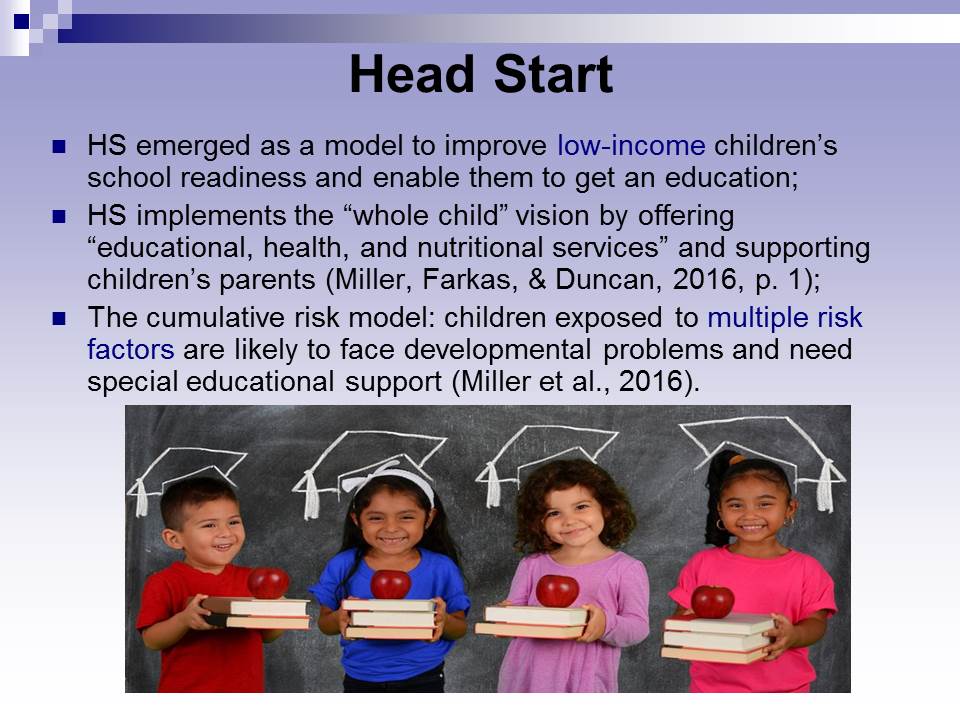
HighScope
- Theories: active learning and diverse well-organized materials are central to healthy development;
- The “whole child” vision: diversity of age-appropriate learning materials and family involvement;
- HighScope developmental indicators support socio-emotional, cognitive, and physical development (Epstein & Schweinhart, 2018).
The HighScope approach to early education is structured with special attention to the ideas of active involvement and learning new concepts by doing instead of passive listening to instructors. Speaking about the model’s theoretical foundations, it needs to be said that HighScope is informed by the ideas of teacher-parent partnerships and proper organization of educational settings (Epstein & Schweinhart, 2018). Apart from facilitating active learning and using differentiated activity areas in a classroom, the approach promotes holistic development by strengthening links between teachers and parents to enable the latter to use similar practices at home, thus helping children to learn in various contexts.
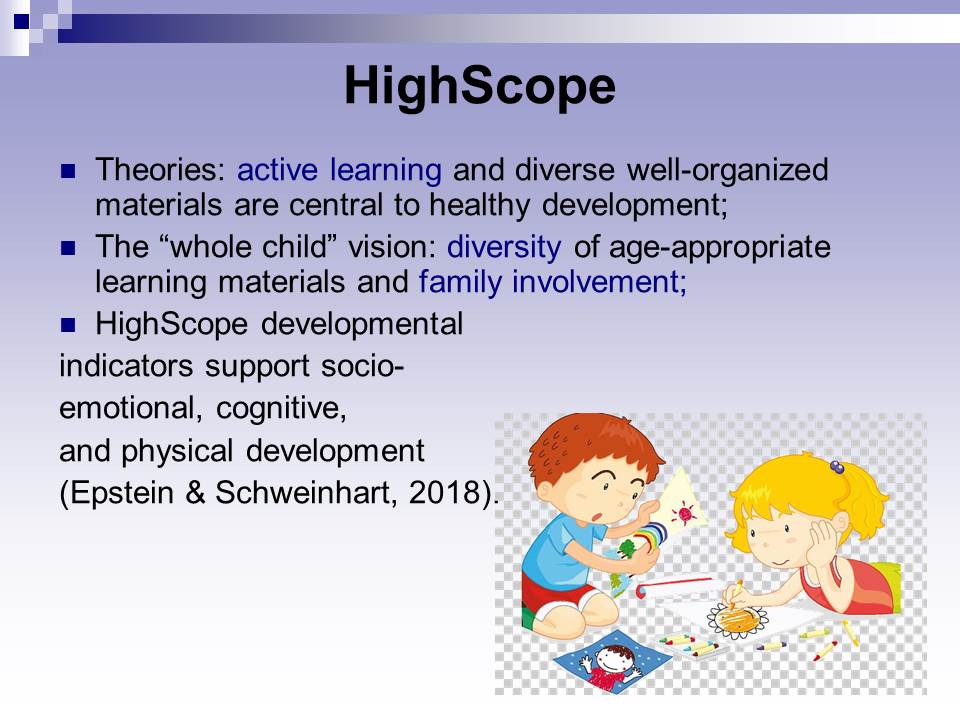
Montessori
- Simple and natural materials to facilitate education (wood, leaves, dressing frames, and similar materials) (Isaacs, 2019; Lillard, 2018);
- Constructivist philosophy of education: children learn when exploring materials and making discoveries;
- Supports holistic development by creating well-organized environments with accessible and age-appropriate materials and opportunities for free activity.
The Montessori approach to early education is a well-known method that makes use of the ideas of child-centeredness, exploration, and freedom of choice. Like many of the previously discussed approaches, Montessori supports the constructivist understanding of how education occurs in early childhood. The method’s distinguishing feature is its emphasis on using simple and common tasks and materials to facilitate all-round development. Thus, Montessori teachers may use natural materials and safe everyday items, for instance, bottles or watering pots, to provide opportunities for purposeful exploration.
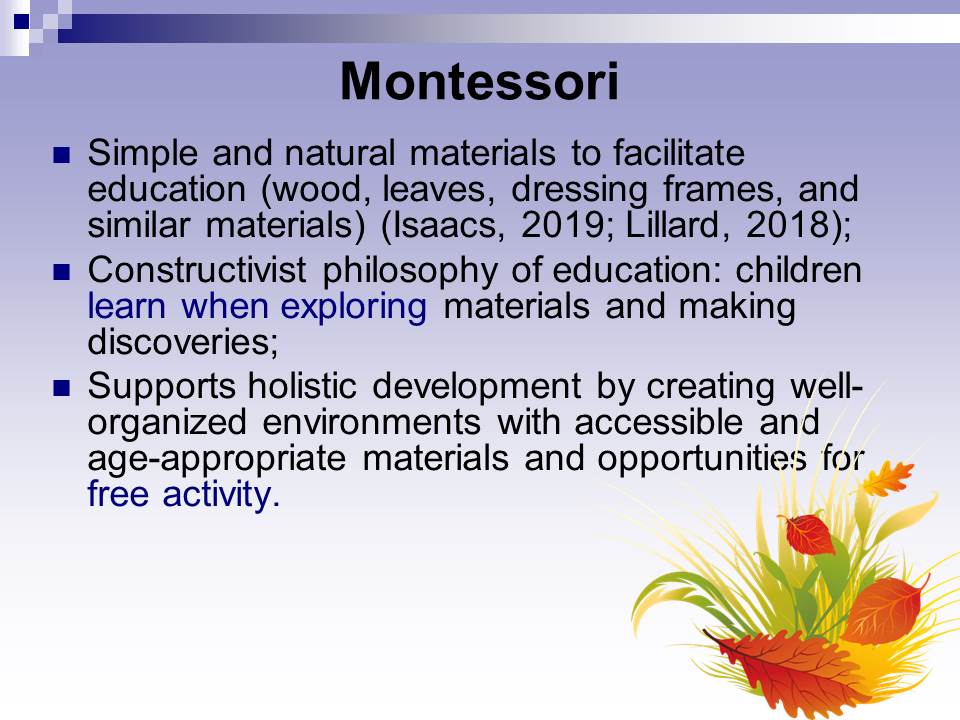
Reggio Emilia
- Learning through experience in relationship-focused environments;
- Theoretical foundations: constructivism (new knowledge is constructed out of experiences);
- Promotes all-round development by supporting teacher-learner and peer collaboration and self-expression in a variety of ways;
- Educators, peers, and physical space are the three “teachers” (McNally & Slutsky, 2017).
The approach in question emphasizes early and preschool development, which makes it more specific and improves the recognition of age-specific problems and needs. It is similar to other pedagogies due to using a constructivist philosophy and being a student-centered approach. Its distinguishing feature is the focus on children’s ability to build relationships with teachers and peers when exploring learning environments. By emphasizing relationships, the approach supports emotional and social development, whereas the selection of age-appropriate and effective learning materials improves children’s understanding of physical space and facilitates cognitive development.
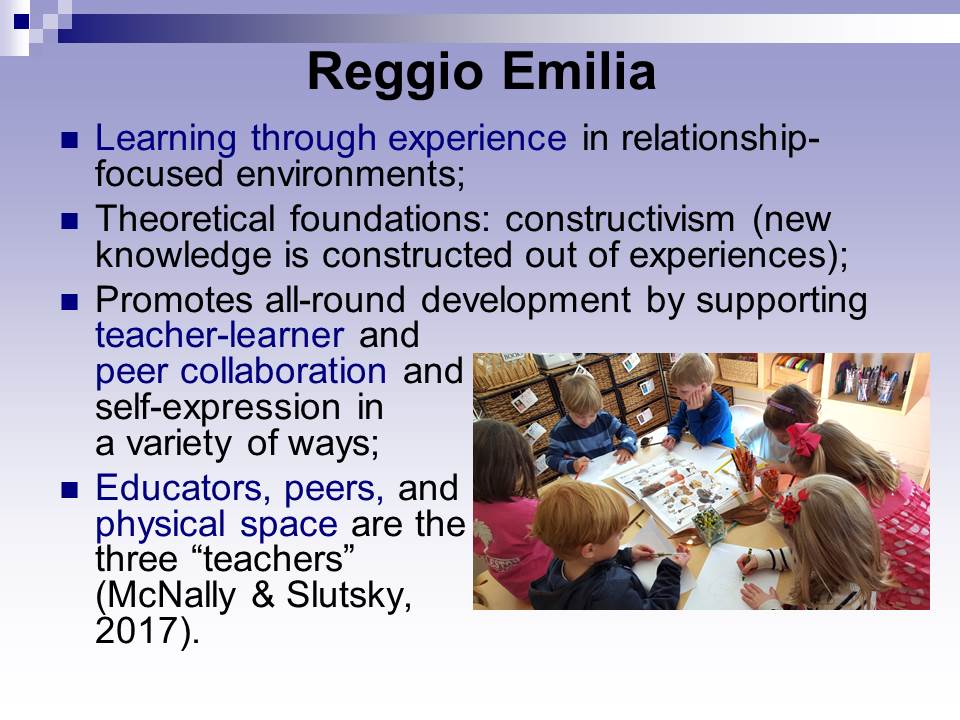
Waldorf
- Focus on imagination and holistic and integrated development;
- Cognitive, practical, artistic, and communication skills are developed due to artistic activities, group time, and practice-oriented tasks;
- Steiner’s theory of child development: during the “moon” developmental stage (from birth to 7 years old), children learn by imitation (Association of Waldorf Schools of North America, n.d.).
Waldorf education is an approach to early education based on Steiner’s theory that singles out three developmental stages and proposes learning by imitation to support the youngest learners. Waldorf classrooms enable children to play with simple toys and natural materials to develop their imagination, and group time (storytelling, games, etc.) and practice-oriented activities also support the whole person development.
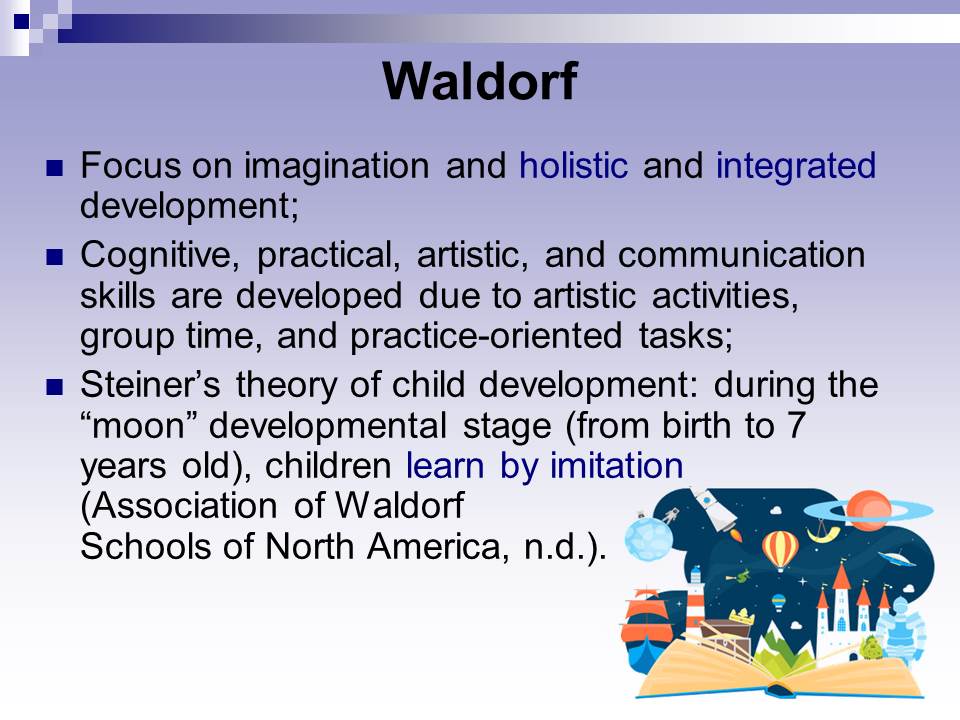
Community Demographics
- Over 20% of people in San Dimas are foreign-born;
- Racial composition: White – >46%, Hispanic/Latino – >32%, Asian – >15%, African-American – >2%, biracial/multiracial – >2%;
- The largest demographic groups: 5-17 years old and 25-34 years old;
- Children younger than 5 make up 5% of the population (“San Dimas, CA,” 2018).
The demographic trends observed in San Dimas can be helpful when it comes to selecting one approach to early education that would be the most beneficial to the community in question. As of 2018, more than one-fifth of all residents were people born outside of the United States. Children and teenagers make up a large part of the population, and this is why it is reasonable to add variety to educational opportunities in the city.
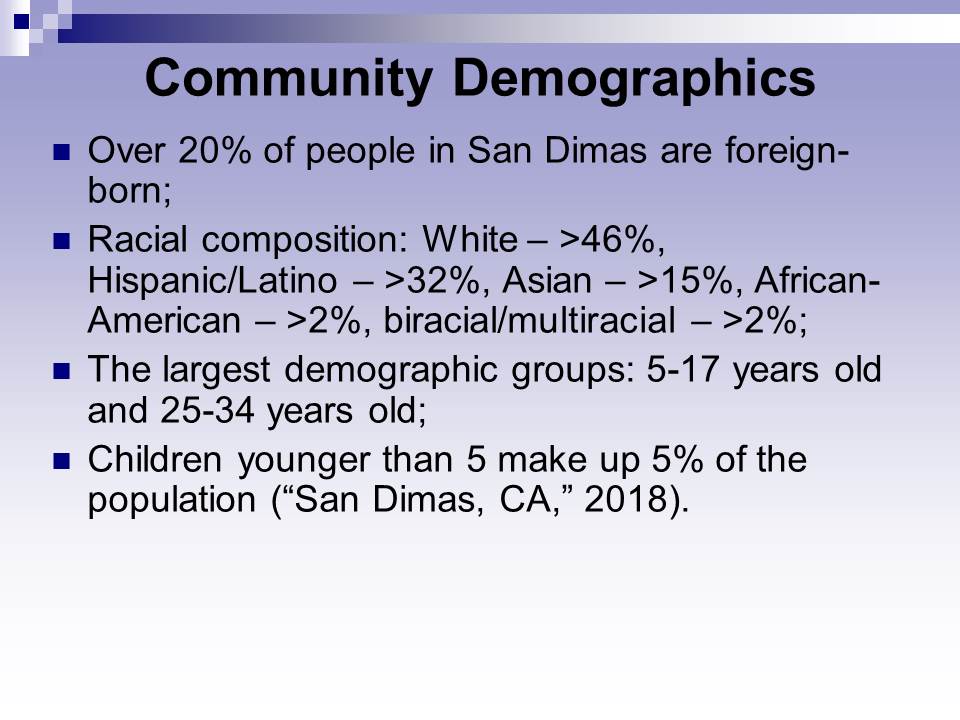
Educational Model Selection
Reasons to choose the Reggio Emilia approach to education:
- Focus on early development;
- Use of physical space to support individual and collaborative work;
- Opportunities for self-discovery;
- Unique learning environments resembling small cities (McNally & Slutsky, 2017).
It is reasonable to implement the Reggio Emilia approach to early education due to a number of advantages associated with its use. To begin with, RE schools offer unique learning experiences by using physical space to create classrooms and small studios, thus enabling children to engage in both collaborative and individual work to explore the world (McNally & Slutsky, 2017). Apart from relationships, the approach promotes self-discovery by enabling children to act as independent explorers and researchers and ask for help if necessary.
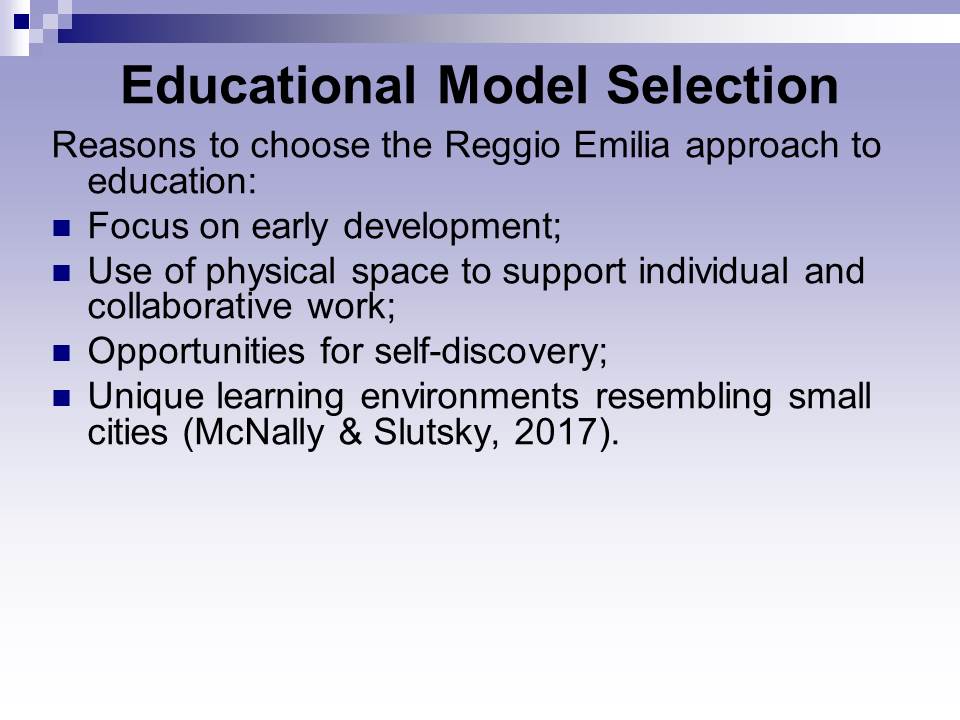
The Reggio Emilia Approach and Child-Centered Beliefs
Teachers act as:
- Researchers: studying children’s needs to provide necessary assistance;
- Advocates: voicing children’s and families’ concerns to initiate change;
- Collaborators: uniting efforts with colleagues/organizations to improve children’s experiences;
- Facilitators: “provoking occasions of discovery through inspired learning” (McNally & Slutsky, 2017, p. 1930).
The model enables educators to implement child-centered beliefs by defining a range of roles that each teacher is supposed to fulfill to achieve success. Thus, Reggio Emilia teachers act as researchers studying children and their needs and advocates for young learners and families who are capable of using documentation to encourage public discussion and improvement (McNally & Slutsky, 2017). Also, Reggio Emilia teachers implement their vision by acting as collaborators and applying the pedagogy of listening to make teacher-child communication more effective. Finally, teachers facilitate children’s independent exploration to promote the development of different basic skills.
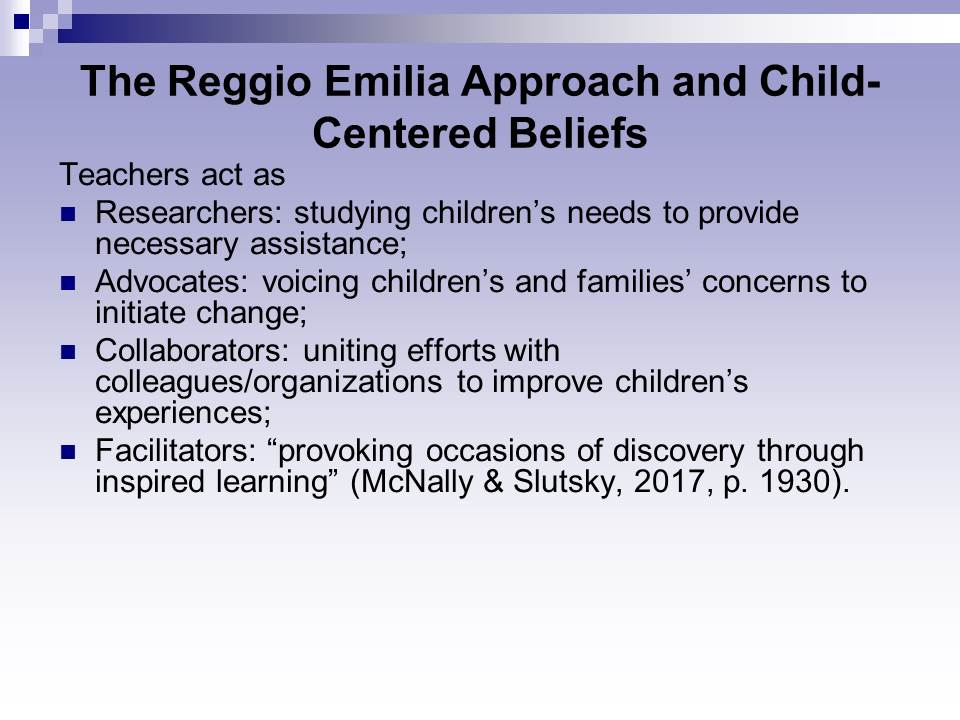
Why the Model is Good for the Community
- The Reggio Emilia approach emphasizes relationship-building and encourages peer collaboration;
- The racially diverse population of San Dimas may benefit from an early education in relationship-focused environments;
- Promoting mutual respect between cultures.
In general, RE schools can serve as a good model for San Dimas since they use space organization to facilitate the development of relationships in diverse situations. One critical tendency is racial diversity – there are three prominent racial groups. The Reggio Emilia pedagogy emphasizing collaboration may help to encourage early socialization in this diverse community, thus making children see that they have a lot in common despite cultural differences.
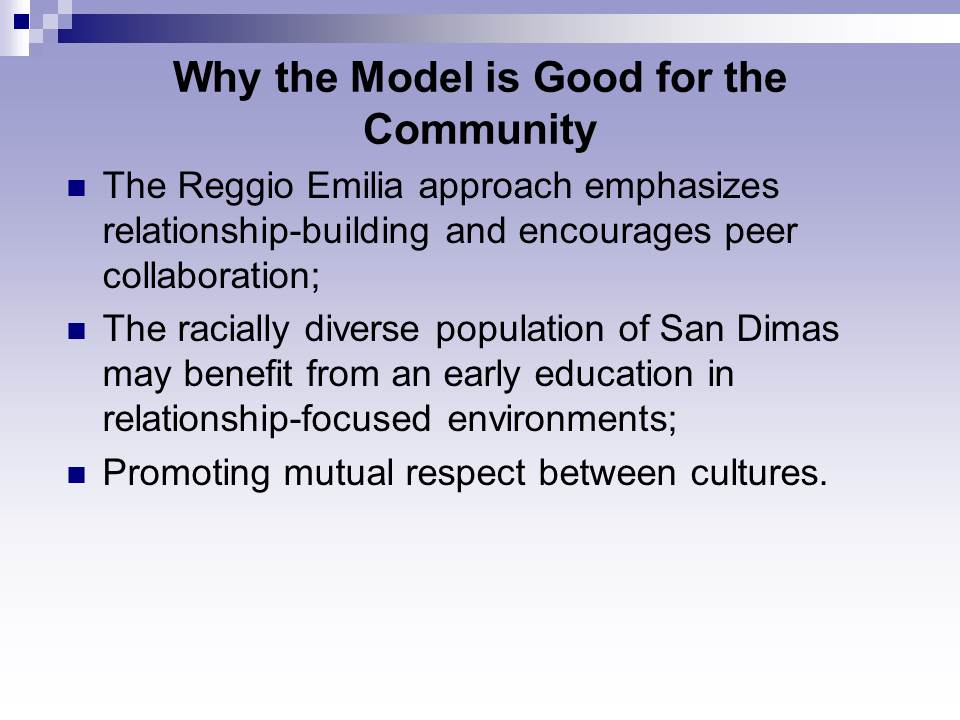
References
Association of Waldorf Schools of North America. (n.d.). Waldorf education. Web.
Epstein, A. S., & Schweinhart, L. J. (2018). Educational tenets of the Highscope curriculum. In M. Fleer & B. van Oers (Eds.), International handbook of early childhood education (pp. 1347-1377). Dordrecht, the Netherlands: Springer.
Helm, J. H., & Katz, L. G. (2016). Young investigators: The project approach in the early years (3rd ed.). New York, NY: Teachers College Press.
Isaacs, B. (2019). Montessori today. Early Years Educator, 21(8), 38-45.
Lillard, A. S. (2018). Rethinking education: Montessori’s approach. Current Directions in Psychological Science, 27(6), 395-400.
McNally, S. A., & Slutsky, R. (2017). Key elements of the Reggio Emilia approach and how they are interconnected to create the highly regarded system of early childhood education. Early Child Development and Care, 187(12), 1925-1937.
Miller, E. B., Farkas, G., & Duncan, G. J. (2016). Does Head Start differentially benefit children with risks targeted by the program’s service model? Early Childhood Research Quarterly, 34, 1–12.
San Dimas, CA. (2018). Web.